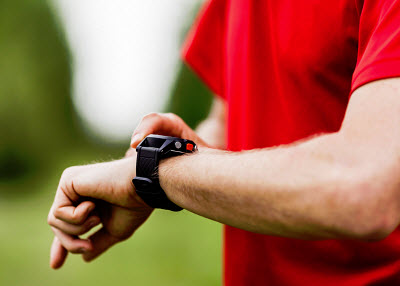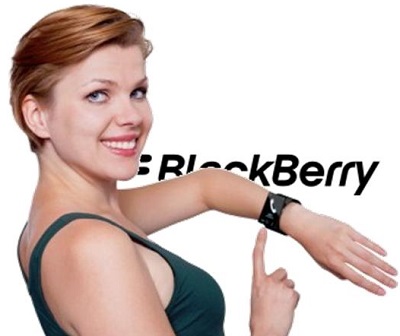The brand has now added The Flash, a fitness and sleep tracker device to the mobile shelves.
Misfit Wearables has now announced that it is launching an even more affordable form of wearable technology that will function as a fitness and sleep tracker, and that will focus as much on the health of the wearer’s wallet as it does for his or her body.
The Flash is the second device produced by this company, which has already sold over 600,000 Shines.
The company, itself, was co-founded by former Apple CEO, John Sculley, and highly experienced hardware CEO Sonny Vu. Under their leadership, Misfit has been producing sleek and attractive wearable technology for the health and fitness space that have become very popular, called Shines. These quarter sized devices are worn to track the wearer’s activity levels and provide feedback online over mobile devices or laptops. Now, the company has released The Flash at a lower price point.
This wearable technology is produced in much more affordable soft-touch plastic.
 The Shine is made with a burnished metal finish. The Flash is also available in seven different colors and is less expensive than the Shine. While the Shine is sold for around $100, the Flash is being sold at about half that, at $49.99.
The Shine is made with a burnished metal finish. The Flash is also available in seven different colors and is less expensive than the Shine. While the Shine is sold for around $100, the Flash is being sold at about half that, at $49.99.
According to CEO Sonny Vu, “We used to call it the Shine C,” making reference to the names used in last year’s iPhone releases of the 5s and its cheaper alternative, the 5c. However, he went on to explain that it isn’t actually a matter of being cheap, at all. The Flash has not been created to be a cheap version of Shine. “There are some people who love the sleek elegant design of the Shine and are fine paying $100 for that product. And then there’s a segment that wants a more colorful presentation with something more fun that they can afford to buy for their kids. That’s what the Flash is for.”
The two devices provide essentially the same types of features, from step tracking, sleep tracking, and estimated calories burned, in addition to swimming and cycling data. This is uploaded to a mobile device through a paired app. The devices will start shipping in October but are already being pre-sold.
BWild |
September 16, 2014
Though the device may be in the company’s labs, there is no guarantee that it will ever hit the market.
Not a full week after the Apple Watch was unveiled to a very mixed response from the technology world, BlackBerry has now revealed that it has been looking into its own smartwatch possibilities.
John Sims, the enterprise head at Blackberry, revealed that it has been experimenting with wearable tech.
Sims explained that it would be very interesting to make it possible to run BlackBerry Messenger (BBM) on a smartwatch or other wearable technology device. That said, he also pointed out that “We’re not releasing anything at the moment, but it’s a definite area of research for us.” Much of the “internal experimentation” that is going on with this type of device, at the Canadian device maker has been centered around an effort made by Sims’s team as they look into the way that they work from the perspective of mobile app use.
The experimental smartwatch would work with a smartphone and would use a “voice interface” for communication.
 This wearable technology announcement was made during a roundtable which had been assembled in order to provide an introduction of the company’s new technology assets head, Sandeep Chennakeshu. Previously a Sony-Ericsson CTO, Chennakeshu is now running the QNX OS department, the acquisition of Paratek antenna, the Certicom cryptography lab, and the platform for the Project Ion Internet of Things.
This wearable technology announcement was made during a roundtable which had been assembled in order to provide an introduction of the company’s new technology assets head, Sandeep Chennakeshu. Previously a Sony-Ericsson CTO, Chennakeshu is now running the QNX OS department, the acquisition of Paratek antenna, the Certicom cryptography lab, and the platform for the Project Ion Internet of Things.
Among the assets currently under Chennakeshu’s control are some highly unique and cutting edge options. For example, the Paratek antenna technology functions by making sure that a smartphone antenna does not become “detuned” when the device is held in the user’s hand or up against his or her face. It also makes a difference in the improvement of signal strength and the device battery life.
The elliptic key cryptography from Certicom provides considerably greater efficiency than the current RSA standard, and several security certificates have been issued by BlackBerry for the Zigbee connected home standard. QNX has become the in-car system OS standard in the industry. It is clear that the company is moving toward software and services and away from a focus on devices, but at the same time, it isn’t stopping them from looking into the possibilities of a smartwatch.
 The Shine is made with a burnished metal finish. The Flash is also available in seven different colors and is less expensive than the Shine. While the Shine is sold for around $100, the Flash is being sold at about half that, at $49.99.
The Shine is made with a burnished metal finish. The Flash is also available in seven different colors and is less expensive than the Shine. While the Shine is sold for around $100, the Flash is being sold at about half that, at $49.99.
 This wearable technology announcement was made during a roundtable which had been assembled in order to provide an introduction of the company’s new technology assets head, Sandeep Chennakeshu. Previously a Sony-Ericsson CTO, Chennakeshu is now running the QNX OS department, the acquisition of Paratek antenna, the Certicom cryptography lab, and the platform for the Project Ion Internet of Things.
This wearable technology announcement was made during a roundtable which had been assembled in order to provide an introduction of the company’s new technology assets head, Sandeep Chennakeshu. Previously a Sony-Ericsson CTO, Chennakeshu is now running the QNX OS department, the acquisition of Paratek antenna, the Certicom cryptography lab, and the platform for the Project Ion Internet of Things.